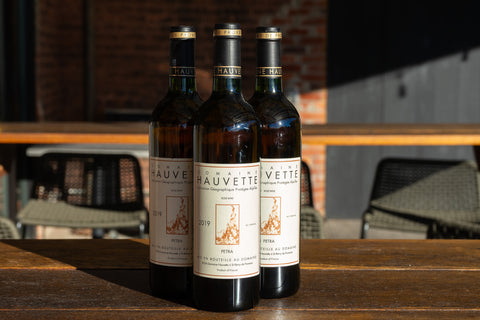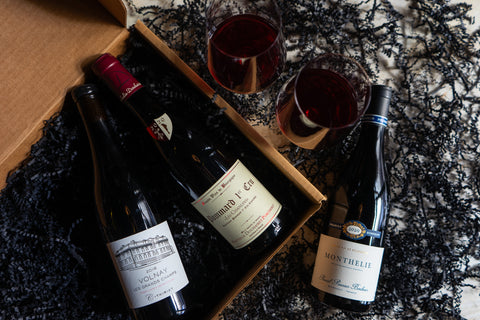Few Italian wine regions produce wines as righteously rarefied as Piedmont. Learn about the landscape, the grapes, and the regions you’ve got to know in this guide.
Read more, or shop our collection of wines from Piedmont.
Lay of the Land
Piedmont site in the upper west corner of Italy. It's centered on the cities of Turin and Asti. To the north and west, the jagged Alps wrap around the region like a massive, snowcapped dragon settling down for a long nap.
Most winemaking happens in the smaller, gently rolling Apennines in the southern part of the region. This is where you'll find familiar regions like Barolo and Barbaresco—although they account for a small portion of the wine output.
Overall, the climate in Piedmont is cool and foggy. Sunny hillsides—which ensure grapes ripen fully—are prized by winemakers looking to give their grapes every advantage.
The Major Grapes
In Piedmont, Nebbiolo reigns supreme. Nebbiolo is a high acid, high tannin black grape that makes robust yet ethereal wines. A glass of Nebbiolo might surprise you. It will look almost translucent, like a great Pinot Noir, and smell like cherry, raspberry, roses, and earth. But once you take a sip you’ll taste its raw power — the grippy tannins and deceptively full body.
Stick around long enough and you’ll find that Piedmont, like the rest of Italy, is home to an abundance of indigenous grapes. There’s the more common Barbera, another black grape variety, and Cortese, a green grape, as well as lesser-known varieties like Grignolino, Pelaverga, and more.
The Regions to Know
Barolo DOCG
Not for nothing, Barolo is known as the King of Wines. The region is located southwest of the city of Alba in the Apennines. Here, Nebbiolo shines in structured wines that can age for a lifetime. You'll also find what's called modern Barolo that can be enjoyed earlier.
Barbaresco DOCG
If you’re looking for a more approachable take on Nebbiolo, Barbaresco is a good choice. Located to the north of the city of Alba, in the Langhe area, Barbaresco is less tannic and more immediately welcoming than Barolo thanks to a warmer, drier climate and more fertile soils than its neighbor.
Langhe DOC
Both Barolo and Barbaresco are small appellations in the Langhe hills. The broader Langhe appellation has more loose regulations than Barolo and Barbaresco which allows its winemakers to produce a greater variety of wines. We particularly love Langhe Nebbiolo, which can be like Barolo and Barbaresco but for a fraction of the price.
Bramaterra DOC
Most of Piedmont's winemaking regions sit to the south of the Po River. Bramaterra is a part of Alto Piemonte, a region north of the Po in higher elevation Alpine foothills. You can find beautiful, well-priced Nebbiolo based wines here that are more immediately drinkable than Barolo and even Barbaresco. Bramaterra Rosso can be a blend of mostly Nebbiolo with some Croatina, Uva Rara, and/or Vespolina.
Barbera d'Alba DOC
Unlike Barolo and Barbaresco, Barbera d'Alba is known for immediately drinkable wines made from the juicy Barbera variety. You'll still get the black and red cherry notes of Nebbiolo but the wines are juicier—higher acid and lower tannin—perfect for weeknight dinners.
Iconic Piedmont Food Pairings
Looking to get the most out of that Barolo? Try pairing it with a regional dish. Piedmont is known for rich, elegant, and simple dishes that balance its powerful, structured wines.
Silky tajarin—a golden yellow egg pasta—with a simple sauce of parmesan and butter is an unexpected and delicious combo with Barolo. Even better with Piedmont truffles shaved over it.



